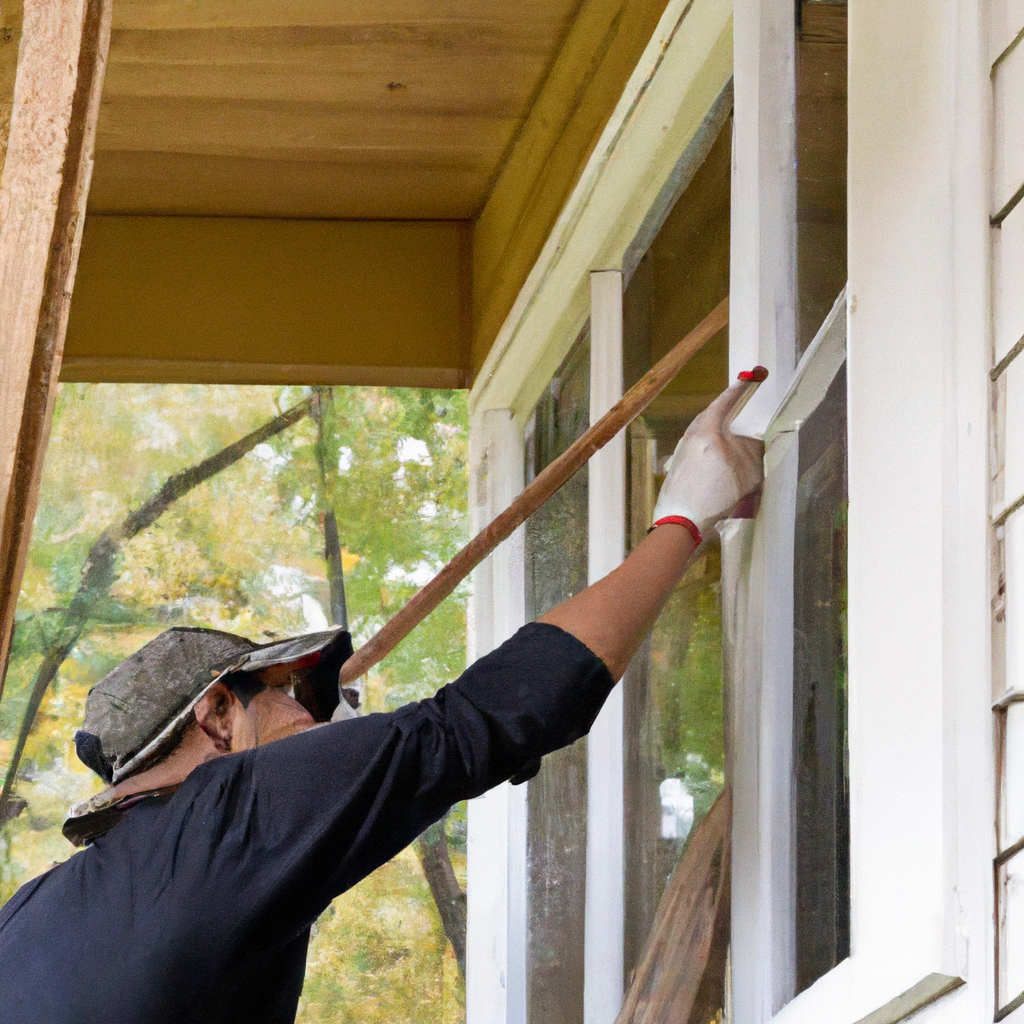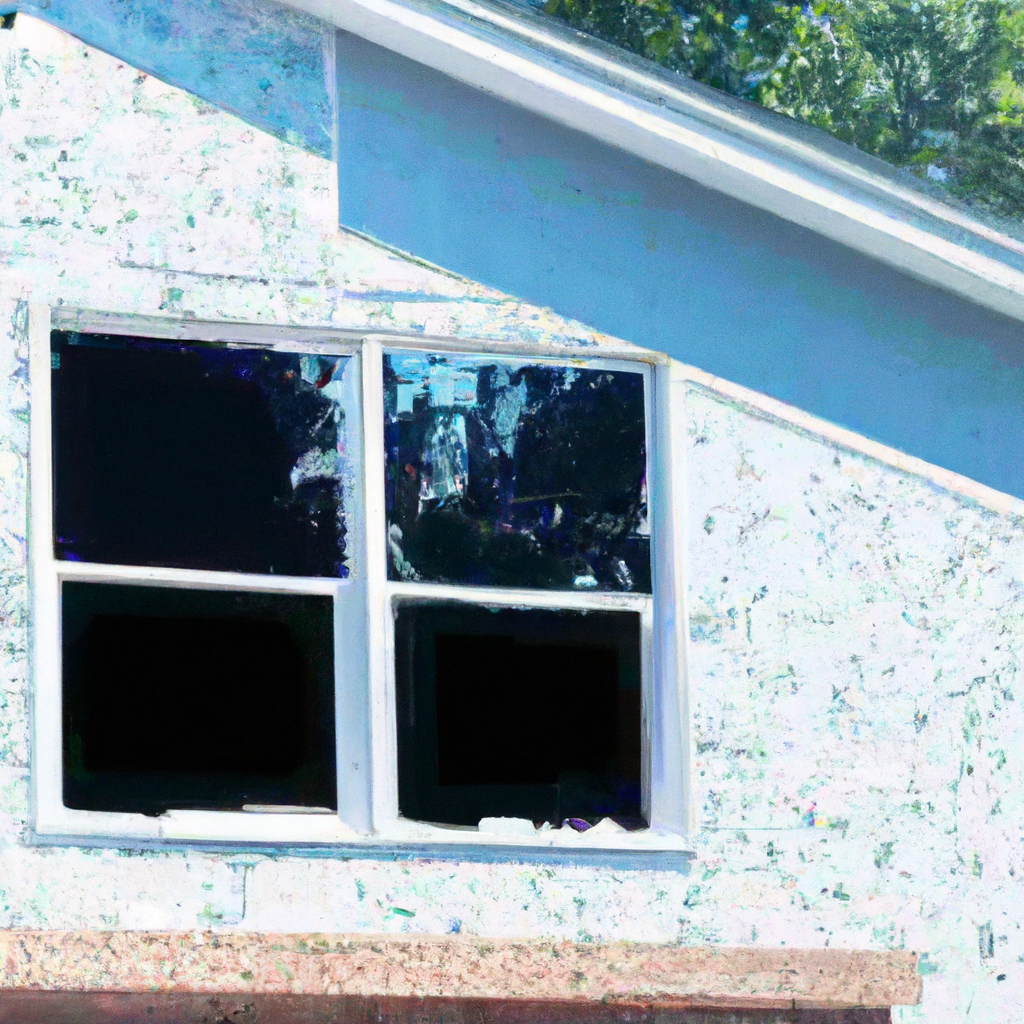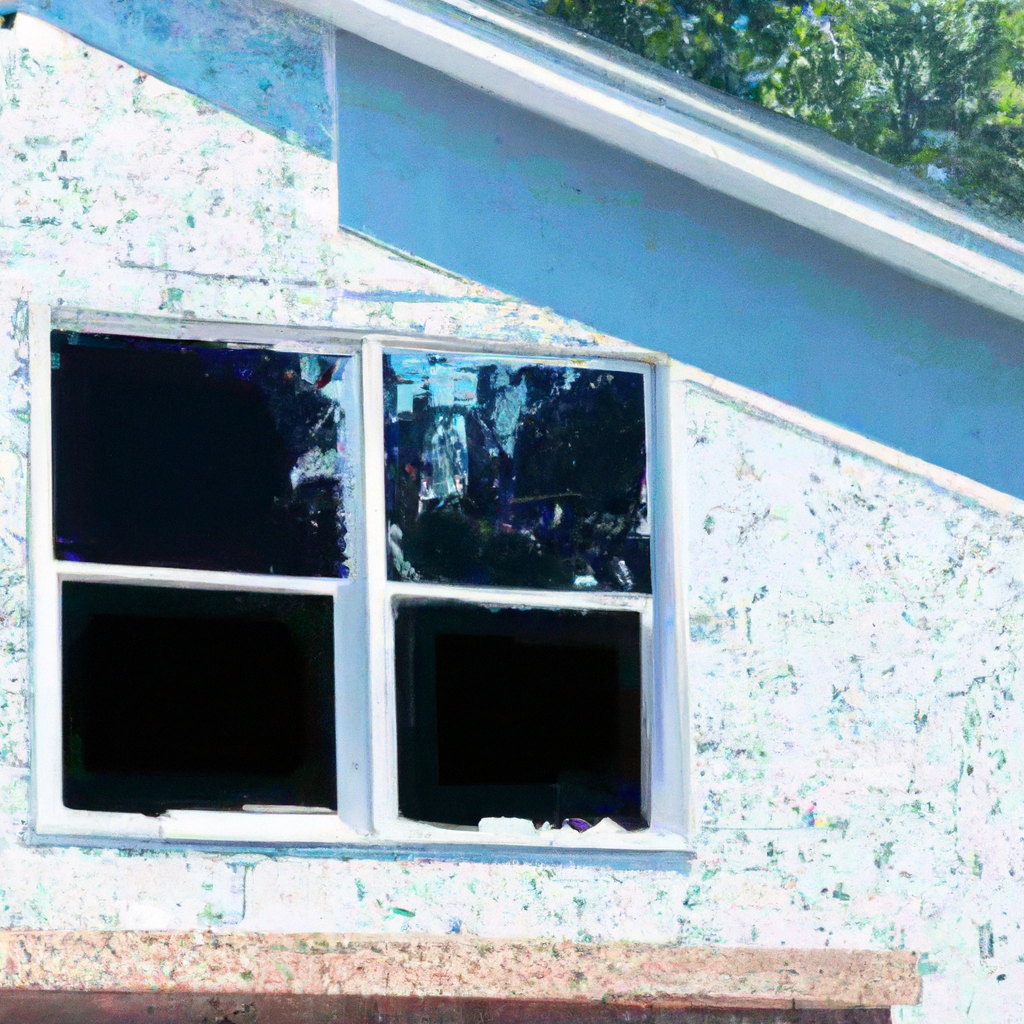So you’ve decided to invest in impact windows for your home, but now you’re wondering if you need to reinforce your walls to support these new windows. The short answer is, it depends. Installing impact windows can be a significant home improvement project, and while reinforcing your walls may not always be necessary, it’s essential to evaluate your specific situation to ensure a successful installation. In this article, we’ll explore the factors you need to consider before deciding whether or not to reinforce your walls, helping you make an informed decision and protect your home from potential harm.

Factors to Consider
When considering impact window installation, there are several factors you should take into account to ensure that your walls can support the new windows effectively. These factors include the types of impact windows you plan to install, the age and condition of your walls, building codes and regulations in your area, the structural integrity of your building, and the size and weight of the windows you intend to install.
Types of Impact Windows
Before reinforcing your walls, it’s important to determine the type of impact windows you plan to install. Impact windows come in various designs, including single-hung, double-hung, casement, and sliding windows. Each type has different qualities and may require different levels of reinforcement. Consulting with a professional can help you determine the specific requirements for the type of impact windows you choose.
Age and Condition of Walls
The age and condition of your walls play a crucial role in determining whether reinforcement is necessary for impact window installation. Older walls, especially those made of brittle or weak materials, may require additional support to withstand the weight and force of impact windows. A thorough inspection of your walls will help identify any existing weaknesses or structural issues that need to be addressed.
Building Codes and Regulations
It is essential to familiarize yourself with the building codes and regulations in your local area before proceeding with impact window installation. Building codes vary from region to region and outline specific requirements for reinforcing walls and installing impact windows. Determining the applicable codes and regulations will ensure that your installation meets the necessary safety standards.
Structural Integrity of the Building
The structural integrity of your building is a crucial consideration when determining whether wall reinforcement is necessary. Buildings with preexisting damage, such as cracks or deteriorating materials, may not have the necessary strength to support impact windows. Hiring a professional to assess the structural integrity of your building will help determine whether reinforcement is needed and, if so, the most appropriate methods to reinforce your walls.
Window Size and Weight
Another important factor to consider is the size and weight of the impact windows you plan to install. Larger and heavier windows may exert more force on your walls, requiring additional reinforcement. Understanding the dimensions and weight of the windows will help you determine the extent of reinforcement needed.
Assessing the Walls
Before proceeding with wall reinforcement, it is advisable to hire a professional to assess the condition and strength of your walls. A professional contractor or structural engineer can provide valuable insights and guidance throughout the process. They can also help you inspect the wall material, check for cracks or weaknesses, determine load-bearing walls, and consult the building plans.
Hire a Professional
Engaging the services of a professional is highly recommended when assessing your walls for impact window installation. Professionals have the expertise and experience to identify potential issues and recommend appropriate reinforcement solutions. Their knowledge and skills are crucial in ensuring the safety and effectiveness of your installation.
Inspecting the Wall Material
Inspecting the wall material is an essential step in assessing the walls for reinforcement. Walls can be made of various materials, such as concrete, brick, or wood, each with its specific characteristics and strengths. Evaluating the condition and quality of the wall material will help determine the extent of reinforcement required.
Checking for Cracks or Weaknesses
During the assessment process, it is important to check for any cracks or weaknesses in the walls. Cracks can be indications of underlying structural problems that need to be addressed before proceeding with impact window installation. Any weak areas should be identified and reinforced to ensure the overall stability and safety of the installation.
Determining Load-Bearing Walls
Identifying load-bearing walls is crucial when considering wall reinforcement. Load-bearing walls support the weight of the structure, and any alterations or additions, such as impact windows, may require additional reinforcement to distribute the load effectively. A professional can help determine and reinforce these load-bearing walls to maintain the structural integrity of the building.
Consulting the Building Plans
Referring to the building plans is another helpful step in assessing the walls for impact window installation. Building plans provide detailed information about the structural layout and design of your building. Consulting the plans can help identify supporting structures and determine the best approach for reinforcing the walls.
Reinforcement Options
Once you have assessed the condition of your walls and determined the specific requirements for impact window installation, several reinforcement options may be considered. These options include reinforcing with steel beams, installing additional support channels, using plywood sheathing, applying reinforcement mesh and epoxy, and bracing the walls with steel plates.
Reinforcing with Steel Beams
Reinforcing walls with steel beams can provide added strength and support. Steel beams are strong and durable, capable of redistributing the load of impact windows throughout the structure. Professional contractors can determine the appropriate placement and size of steel beams based on the specific needs of your installation.
Installing Additional Support Channels
Additional support channels, such as braces or brackets, can be installed to reinforce the walls. These support channels help distribute the weight of the impact windows more evenly, reducing stress on individual wall sections. This method is commonly used when the existing walls require additional reinforcement but cannot support the weight of steel beams.
Using Plywood Sheathing
Plywood sheathing is another option for reinforcing walls for impact window installation. Plywood panels can be attached to the walls to provide additional structural support. This method is particularly effective for older or weaker walls that may not withstand the force of impact windows.
Applying Reinforcement Mesh and Epoxy
Reinforcement mesh, typically made of fiberglass or carbon fiber, can be applied to the walls along with epoxy to strengthen the structure. The mesh provides added tensile strength, while the epoxy bonds the mesh to the walls. This method is commonly used in conjunction with other reinforcement techniques to enhance the overall stability of the walls.
Bracing the Walls with Steel Plates
Bracing the walls with steel plates is another option for reinforcement. Steel plates can be strategically placed along the walls to increase their rigidity and strength. This method is particularly effective for load-bearing walls or areas that require additional support.
Cost Considerations
When considering impact window installation and wall reinforcement, it’s important to factor in the associated costs. Several cost considerations should be taken into account, including professional assessment and consultation fees, the cost of reinforcement materials, labor costs for reinforcement, additional expenses for structural engineering services, and impact window installation costs.
Professional Assessment and Consultation Fees
Hiring a professional to assess your walls and provide consultation services will incur associated fees. The cost of these services will depend on factors such as the complexity of the project, the expertise of the professional, and the location.
Cost of Reinforcement Materials
The cost of reinforcement materials will vary depending on the chosen method and the extent of reinforcement required. Steel beams, support channels, plywood sheathing, reinforcement mesh, epoxy, and steel plates all come with their associated costs. It is advisable to obtain multiple quotes from reputable suppliers to ensure competitive pricing.
Labor Costs for Reinforcement
The labor costs for wall reinforcement will depend on various factors, including the scope of work, the complexity of the project, and the location. Hiring professional contractors ensures that the reinforcement is done correctly, but it will come at a cost. Obtaining multiple quotes and comparing the services and rates of potential contractors can help you find the best value for your investment.
Additional Expenses for Structural Engineering Services
In some cases, structural engineering services may be required to assess the structural integrity and feasibility of the reinforcement. The fees for these services will vary depending on the complexity of the project and the services rendered. It is essential to budget for these additional expenses to ensure a thorough and successful reinforcement process.
Impact Window Installation Costs
The cost of impact window installation itself should also be considered. Impact windows come in various price ranges depending on the type, size, and brand. Researching and obtaining quotes from reputable suppliers and installation professionals will give you an idea of the overall cost for the windows themselves.

Permitting and Approval Process
Reinforcing walls for impact window installation often involves obtaining permits and approvals from the local building department. It is important to understand and navigate the permitting and approval process to ensure compliance with building codes and regulations.
Consulting Local Building Department
Contacting the local building department is the first step in the permitting and approval process. The building department can provide guidance on the specific permits needed and the associated requirements. They may also have valuable information regarding any local ordinances or regulations that apply to your project.
Obtaining the Required Permits
Once you have determined the necessary permits, it is essential to complete the application process and submit the required documentation. This may include construction plans, engineering calculations, and other relevant information. Working with a professional contractor can help ensure that all the permit requirements are met accurately.
Submitting Plans for Approval
After obtaining the permits, you will need to submit your construction plans for approval. The plans will be reviewed by the building department to ensure compliance with building codes and regulations. Any necessary modifications or adjustments may need to be made to obtain final approval.
Coordinating with the Inspection Process
Throughout the reinforcement and impact window installation process, multiple inspections will be required to ensure compliance with the approved plans. It is essential to coordinate with the building department and schedule the required inspections at the appropriate stages of the project. Passing inspections is necessary to proceed with the installation and ensure compliance with building codes.
Ensuring Compliance with Building Codes
Compliance with building codes is crucial for a successful impact window installation. Building codes are in place to ensure the safety and structural integrity of the building. Working closely with professionals who are knowledgeable about the local building codes will help ensure that all requirements are met and that the installation is done correctly.
Benefits of Reinforcement
Reinforcing your walls for impact window installation offers several benefits that extend beyond enhanced aesthetics. These benefits include enhanced structural stability, increased security and safety, improved energy efficiency, better noise insulation, and potential insurance premium reductions.
Enhanced Structural Stability
Reinforcing your walls enhances the overall structural stability of your building. By strengthening load-bearing walls and distributing the load more evenly, the reinforcement ensures that your building can withstand the force and weight of impact windows. This added stability can contribute to the longevity and durability of your structure.
Increased Security and Safety
Impact windows, combined with reinforced walls, provide increased security and safety for your property. The fortified walls are better equipped to withstand the impact of potential break-ins or extreme weather conditions, offering you peace of mind and protection. Additionally, impact windows are designed to resist shattering, reducing the risk of injury from flying debris during storms or accidents.
Improved Energy Efficiency
Reinforced walls help improve the energy efficiency of your building. The added insulation and stability provided by the reinforced walls reduce air infiltration, minimizing heat loss or gain. This can result in lower energy consumption, decreased utility bills, and a more comfortable interior environment.
Better Noise Insulation
The reinforcement of your walls can also contribute to better noise insulation. Impact windows and reinforced walls create a secondary barrier against external noise, reducing the amount of sound that enters your space. This can result in a quieter and more peaceful indoor environment, minimizing distractions and improving overall quality of life.
Potential Insurance Premium Reductions
Reinforcing your walls for impact window installation may also lead to potential reductions in insurance premiums. Impact windows and reinforced walls offer increased protection against potential damages from storms, hurricanes, or break-ins. Insurance companies often offer discounts or incentives for properties with enhanced security features, making reinforcement a wise investment in both safety and financial savings.
Choosing a Reliable Contractor
Selecting a reliable contractor is crucial for a successful impact window installation. A reliable contractor will ensure that the necessary assessments, reinforcements, and permitting processes are handled professionally and efficiently. Consider the following steps when choosing a contractor for your project.
Researching and Gathering Recommendations
Start by researching contractors in your local area who specialize in impact window installation and wall reinforcement. Look for contractors who have expertise, experience, and positive reviews. Gathering recommendations from friends, neighbors, or reputable online sources can help you narrow down your options.
Verifying Licensing and Insurance
Before hiring a contractor, verify their licensing and insurance credentials. Ensure that they are licensed to perform the necessary work and hold the appropriate insurance coverage. This protects you from liability and ensures that the contractor meets the necessary professional standards.
Reviewing Past Projects and Client Feedback
Reviewing a contractor’s past projects and client feedback is an excellent way to gauge their reputation and quality of work. Request references or ask to see examples of completed projects similar to yours. Positive feedback and successful past projects are indicators of a reliable and competent contractor.
Requesting Detailed Quotes and Timelines
Once you have narrowed down your choices, request detailed quotes and timelines from potential contractors. Compare the services, materials, and costs each contractor offers to ensure you are getting the best value for your investment. A comprehensive quote should outline all the necessary work, materials, and associated costs.
Signing a Comprehensive Contract
Before finalizing the agreement, it is important to sign a comprehensive contract with your chosen contractor. The contract should clearly outline the scope of work, project timeline, payment terms, warranties, and any other relevant details. Review the contract thoroughly and make sure you understand and agree to all the terms before signing.
Conclusion
Reinforcing your walls for impact window installation is a crucial step in ensuring the structural integrity, security, and safety of your property. Considering the factors we have discussed, such as the types of impact windows, the age and condition of your walls, building codes and regulations, the structural integrity of your building, and the size and weight of the windows, will help you determine the necessary reinforcement requirements.
Assessing your walls, exploring different reinforcement options, and understanding the associated costs guide you in making informed decisions for your project. Navigating the permitting and approval process in compliance with building codes is vital to a successful installation. The benefits of reinforcing your walls include enhanced structural stability, increased security and safety, improved energy efficiency, better noise insulation, and potential insurance premium reductions.
Choosing a reliable contractor with expertise in impact window installation and wall reinforcement ensures a seamless and successful project. By following these guidelines and considering the factors and steps outlined in this article, you can confidently reinforce your walls and install impact windows, enhancing the overall value and functionality of your property.
